[ad_1]
Each autumn, I fall in love with maitake mushrooms once more.
Straight translated from Japanese as “dancing mushroom,” legend has it that maitake conjures up a lot enjoyment of seekers that they dance with pleasure upon discovering it. That pleasure may very well be from the shroom’s scrumptious taste or mouthwatering market worth, relying on who you ask.
Wish to strive your hand at foraging a number of? Learn on to find how you can establish maitake mushrooms and study to tell apart them from widespread look-alikes within the area.
Find out how to Determine Maitake Mushrooms
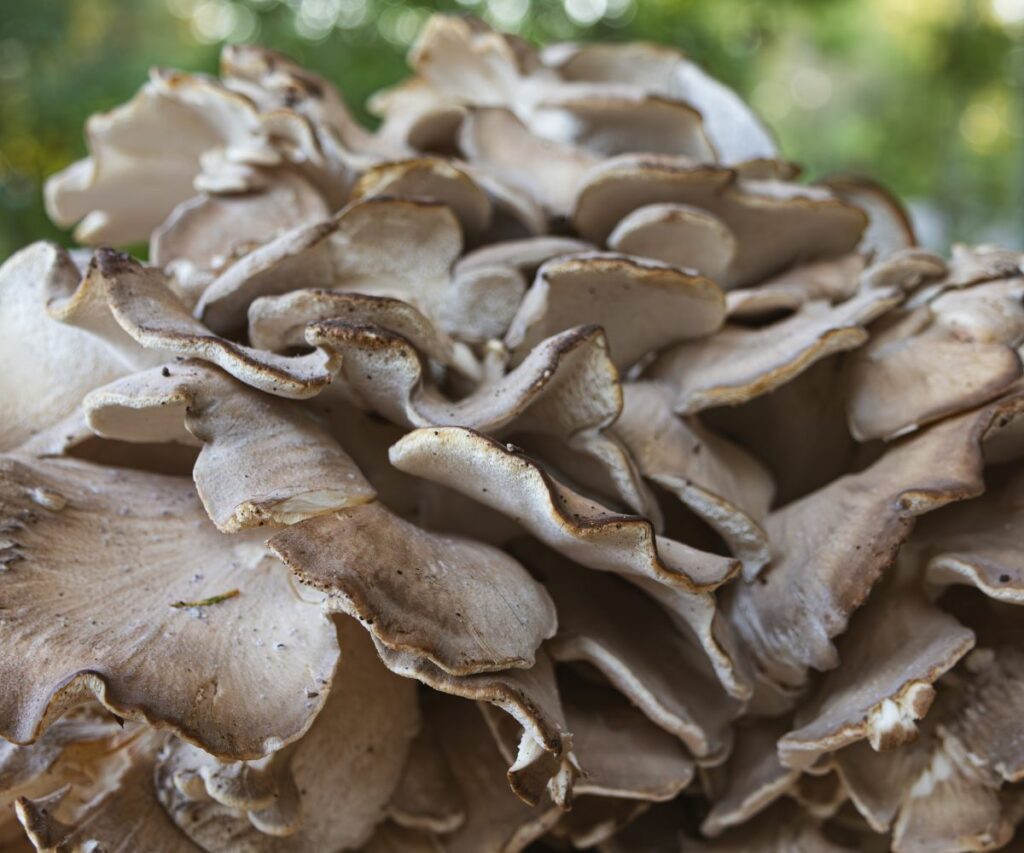

Identified scientifically as Grifola frondosa, maitake mushrooms are additionally generally known as “hen of the woods” or “sheep’s head mushrooms.” It doesn’t matter what identify you like, they’re a secure and rewarding selection for fall foragers.
These fungi aren’t tough to search out when you’re aware of their progress habits, and making a constructive ID is straightforward after you look at their look.
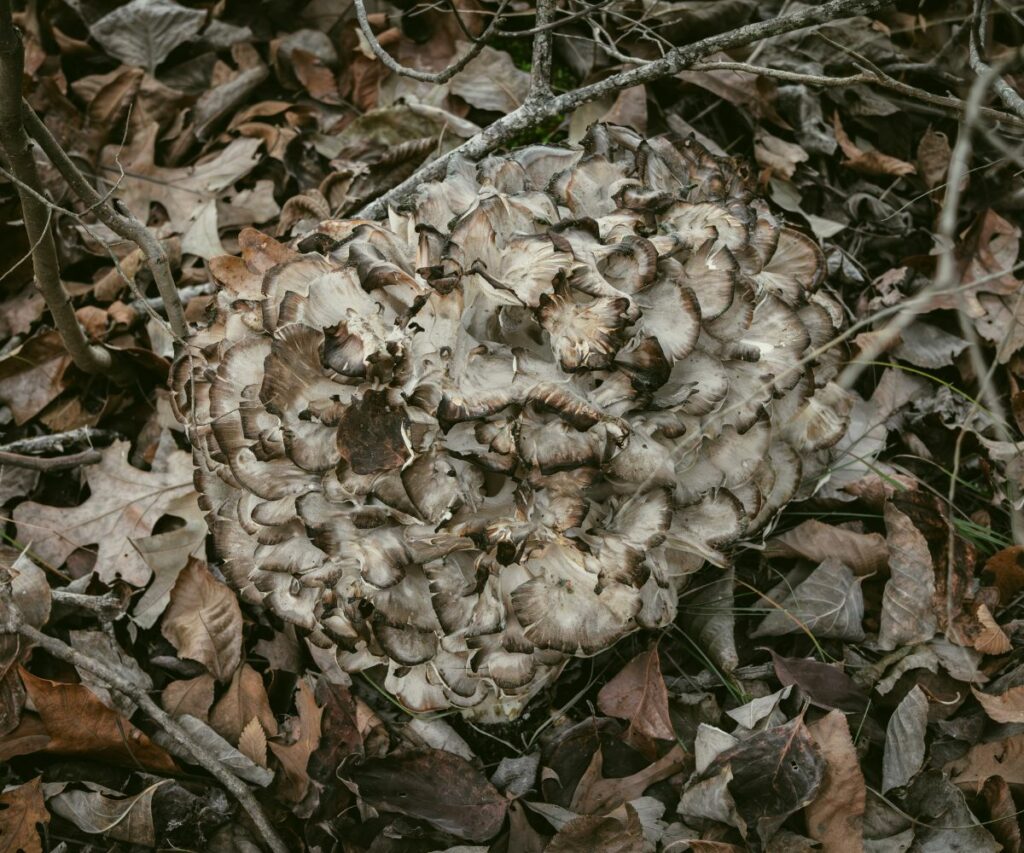

Look
The nickname “hen of the woods” derives from maitake’s supposed similarity to the tail feathers of a dull-colored laying hen. Personally, I feel that is stretching the creativeness fairly far, particularly since maitake mushrooms develop a lot bigger than a hen ever may.
Whereas a cultivated store-bought maitake may span round six to eight inches, wild varieties develop between one and three toes. They will weigh between 10 and 30 kilos, so deliver a sturdy foraging bag while you go searching.
As soon as you see a big, dull-colored polypore within the fall forest, look at the next options to be sure to’ve received a bona fide maitake in your arms:
Cap: Maitake mushrooms have many particular person frond-like caps sprouting from a base stump and radiating outward in a sphere or lopsided rosette. Caps dip downward on the edges in a spoon-like form and could also be beige, grey, brown, and even pinkish. Coloring might change from the tip to the bottom of the person cap, leading to multicolored caps. Colorations are concentric however not distinctly zonate; the colours fade and mix.
Pore floor: The pore floor covers the underside of the cap and runs down the stem. Pores are small however not invisible to the bare eye. They’re deep, jagged, and angular. The pore floor is grayish when very younger however turns into white because the mushroom matures.
Flesh: The flesh is white when lower. It’s agency but pliable and doesn’t bruise.
Stalk: The bottom stalk is normally coated by the caps and never instantly obvious. It’s fibrous, robust, and white, with many particular person branches supporting the multitude of caps.
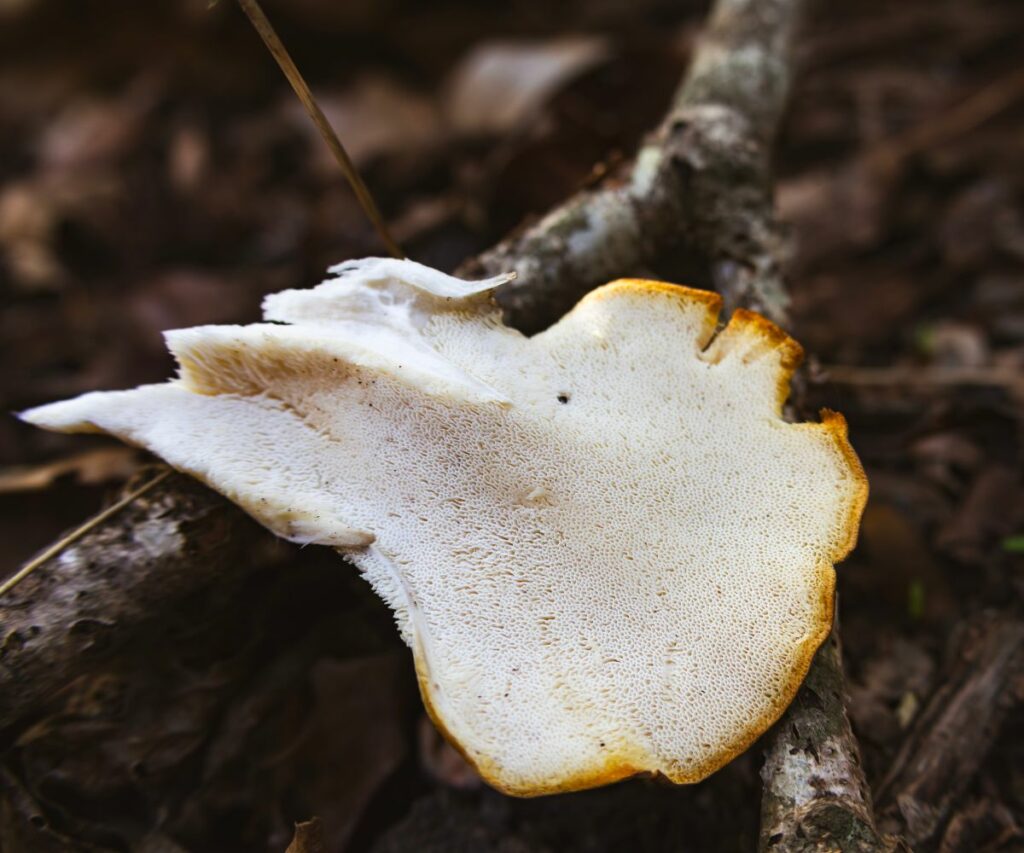

Texture, Style, and Scent
At prime, maitake mushrooms are mushy and tender. Like turkey tail mushrooms, caps might even really feel barely velvety. They’ve agency flesh that holds up effectively beneath strain and can bend to your contact within the area. As specimens are allowed to mature previous prime, they turn into chalky. Caps darken, turn into slimy, and decay.
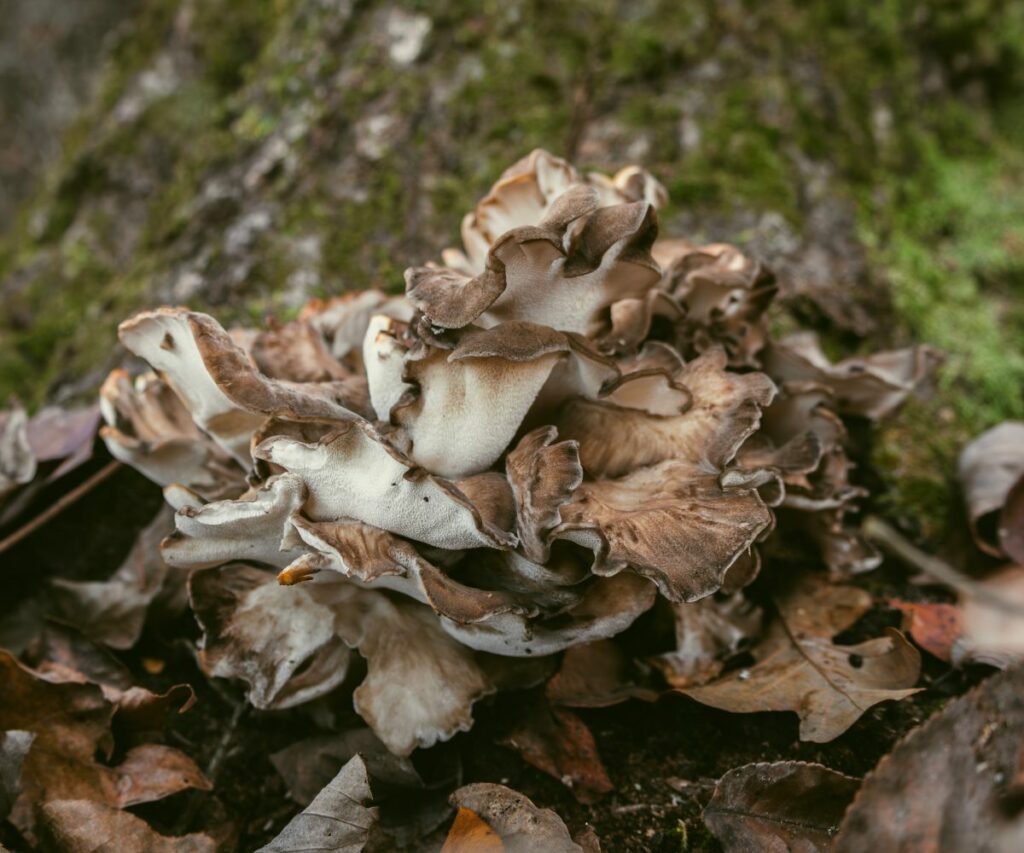

Maitake has a refined odor in comparison with extra aromatic edibles like lion’s mane or chanterelles. You received’t discover them along with your nostril, and while you rise up shut to smell them, they only odor shroomy. The scent is earthy and barely bitter, like a darkish beer. As soon as they go off, the odor turns into overwhelming and disgusting.
Many new foragers get confused by hen of the woods, pondering that it should style like a hen. It will make sense, contemplating that hen of the woods tastes like hen — but it surely’s not true. This fungus is umami, a wealthy and meaty companion that makes a implausible essential. Sear it in scorching oil or grill it for crispy edges.
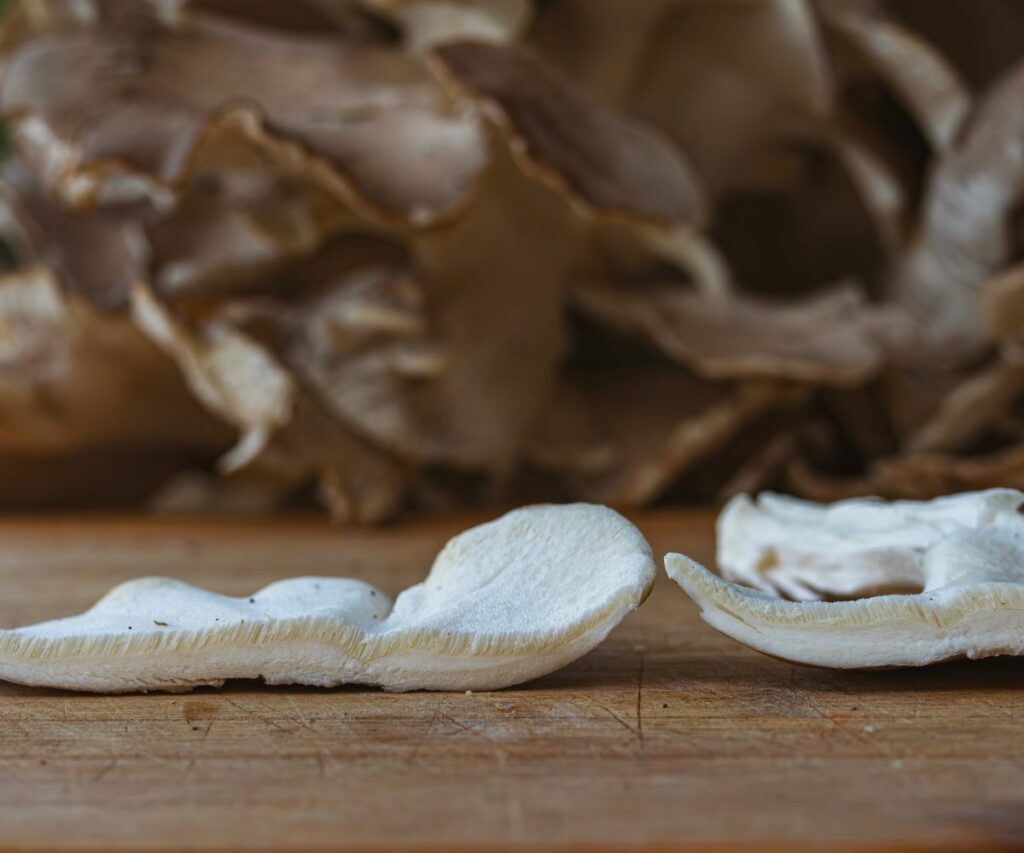

Maitake is a robust flavoring agent that tastes stronger than it smells. It goes nice in seasoning blends, and the harder stalks make a superb soup inventory. Due to its giant dimension, you’ll probably have maitake left over. Its texture and composition are much like that of hen of the woods, and you should use the identical strategies to protect and retailer it.
Habitat
Maitake mushrooms are butt-rot fungi that populate old-growth forests in temperate local weather zones all through the US and worldwide. They’re normally saprobic and do the great work of decomposing deadwood, however occasionally, they present a imply streak and determine to parasitize a residing tree. They aren’t superb at it and are thought-about a weak parasite at finest.
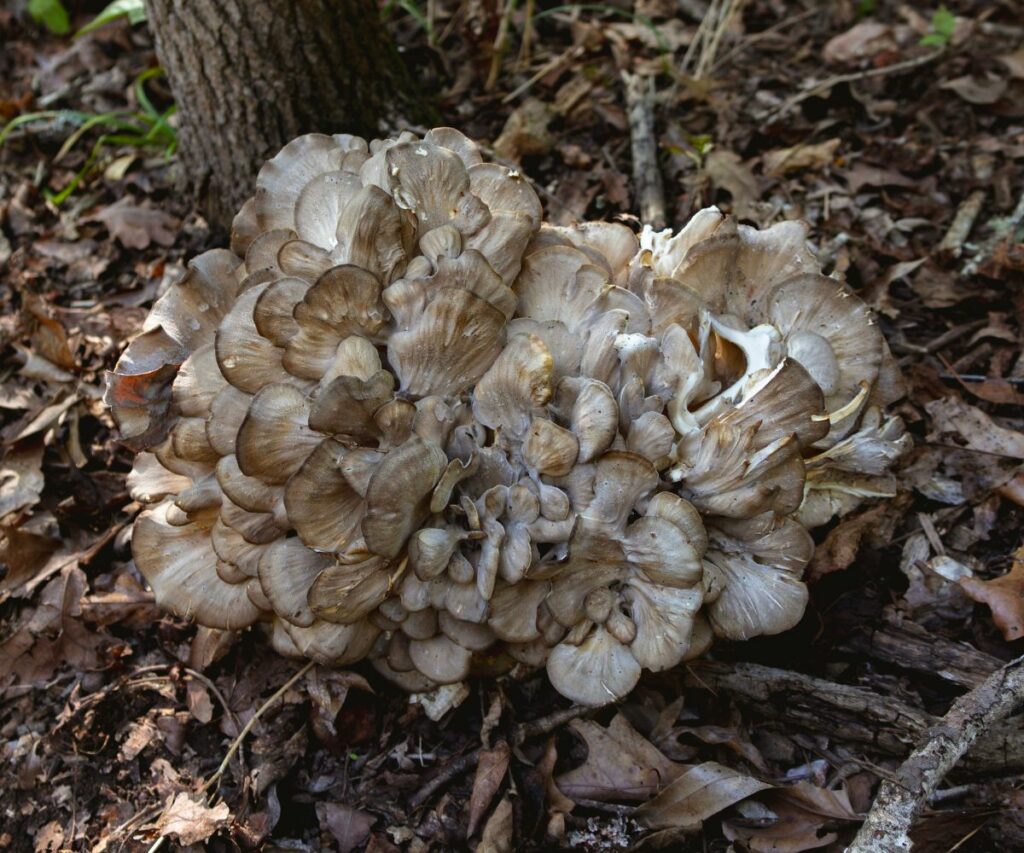

These mushrooms develop solely with hardwoods and virtually completely with oak, although beech, elm, and maple may additionally play host. They by no means develop instantly from a tree’s bark. As a substitute, they populate the bottom on the base of standing sick or deadwood. They might seem a number of toes away from the tree, however make no mistake — they depend on its root system for sustenance.
It’s noteworthy that maitake mushrooms mix exceptionally effectively with their environment. They’re typically the identical colour as fallen autumn leaves, and searchers miss them simply. To keep away from passing up completely good shrooms, go searching from a number of vantage factors to glimpse their pale underbellies.
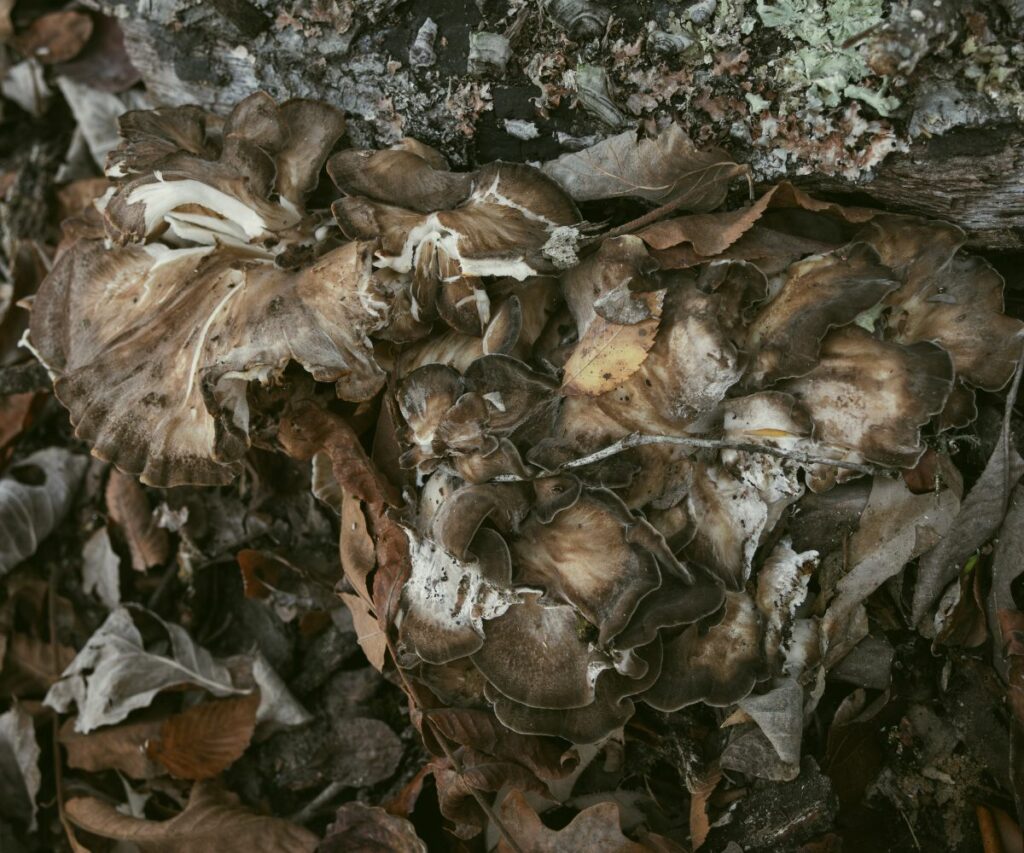

Season and Development Habits
Maitake mushrooms seem wherever from late summer time to late autumn, relying on the place you reside. They normally pop up in August and final till November in my neck of the woods, although I sometimes see a straggler hanging round in December.
These fungi are fairly resilient. They’re triggered into progress by the primary chilly nights of autumn and may stand up to the primary few frosts of winter, so the season tends to be longer. It additionally varies annually, with hotter climate extending the season.
Whenever you discover a maitake, hold your eyes peeled for an additional close by. They drop spores in the identical place yearly, which may result in a number of rosettes rising very shut to 1 one other. It additionally results in maitake mushrooms occupying the identical place 12 months after 12 months. When you discover a flush, that’s your honey gap — pin it in your map, and don’t inform anybody the place it’s!
Maitake ID Test
Brown, beige, grayish, or rosy caps
Massive, clustered rosette formation
White pore floor
Showing in autumn or winter
Rising from floor
Rising close to the bottom of oak or different hardwood
Figuring out Widespread Look-Alikes
Maitake mushrooms haven’t any poisonous look-alikes. They do have some edible look-alikes, and it’s sensible to tell apart these totally different fungi so you possibly can prepare dinner them up in keeping with the very best practices for each.
Black-Staining Polypore
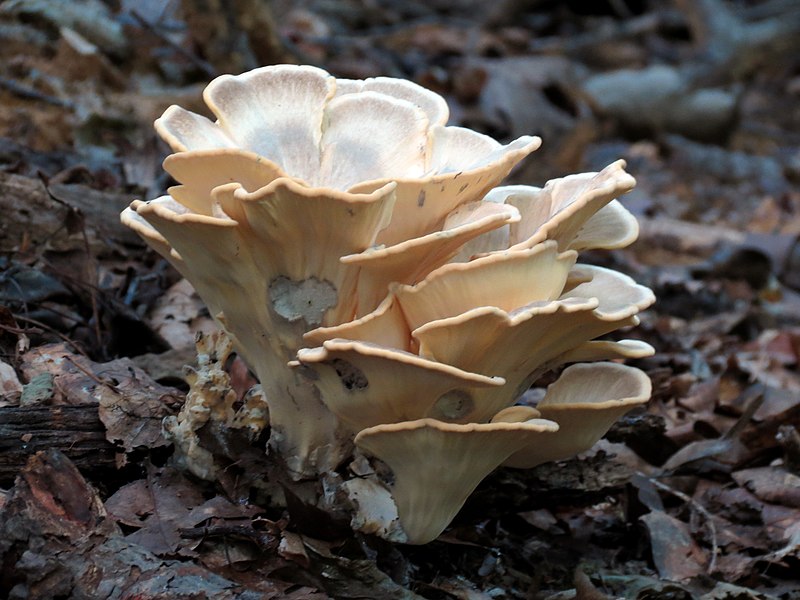

A dead-ringer for maitake, Meripilus sumstinei typically confounds foragers on the hunt for hen. This butt-rot fungus seems in creamy, brown, or grey fronds. It favors the roots of hardwoods however sometimes populates Douglas fir. It normally seems earlier within the spring and summer time however can pop up anytime situations are favorable.
The 2 look practically an identical, however there are a number of essential distinctions. Black-staining polypore caps are normally wavier and extra leaf-like than hens, with much less separation between particular person caps. They typically develop in upward-tipped rosettes, whereas maitake mushrooms develop in flatter rosettes. A black-staining polypore’s flesh can also be thicker and meatier, particularly when younger.
Nevertheless, the primary option to distinguish the 2 is to scrape the floor. The black-staining polypore will stain black while you scratch it. This may occur instantly or in about 5 minutes. If it doesn’t stain black, it isn’t a black-staining polypore — extra probably, you’ve received real hen of the woods in your arms!
When you discover it: Residing as much as its unimaginative identify, black-staining polypore is edible however boring. Use specimens for soup inventory or seasoning blends since they’re too robust to eat.
Umbrella Polypore


Identified within the scientific neighborhood as Polyporus umbellatus, the umbrella polypore is one other butt-rot fungus you may discover in your forays. Umbrellas are a lot much less widespread however visually fairly much like maitake mushrooms, with giant clusters of creamy, brown, or grayish caps sprouting from the bases of dying hardwoods.
The umbrella polypore will get its identify from a definite, umbrella-like cap form that peaks on the prime and folds downward. There could also be dozens of umbrella caps sprouting from a single basal stump, every normally indented in a modest funnel.
The caps flatten out with age and lose their umbrella-like properties. Nevertheless, you possibly can nonetheless use them as an figuring out attribute. Whereas maitake mushrooms may seem to have conjoined fronds that run collectively, it’s clear that umbrella caps are at all times separated.
When you discover it: Harvest and prepare dinner it up! Umbrella polypores have delicate, tender flesh. Uneaten specimens may be tinctured for quite a lot of medicinal functions.
Able to get your arms on some maitake mushrooms? Now that you understand how to establish these autumn treats, you’re able to hit the path and rating your self a scrumptious dinner. Don’t overlook to do the mushroom dance in honor of your discover!
[ad_2]
Source link




